

others
Mexican Peso advances steadily after US data pressures the US Dollar – Crypto News
- Mexican Peso buyers are in charge after the USD/MXN slump below the 18.00 figure.
- Mexico’s Business Confidence improved in October, rising to 54 from September’s 53.8.
- Weak US economic data, including lower-than-expected ADP Employment Change and a drop in ISM Manufacturing PMI, put pressure on the USD.
- Traders brace for US Federal Reserve monetary policy decision around 18:00 GMT.
The Mexican Peso (MXN) gathered traction against the US Dollar (USD) on Wednesday as market sentiment shifted positively due to a tranche of weaker-than-expected economic data from the United States, which weighed on the Greenback (USD). Therefore, the USD/MXN is falling 0.74%, trading at 17.90, well below the psychological 18.00 figure.
The US economic docket was packed on Wednesday. First, the ADP Employment Change revealed by Automatic Data Processing (ADP) showed the economy adding 113K private jobs, above September’s 89K but missing estimates of 150K.
The Institute of Supply Management (ISM) recently announced that October’s Manufacturing PMI witnessed a drop below the 50 contraction/expansion midline, at 46.7 for the previous twelve months in a row, below the consensus and September’s 49.0 reading. The ISM report revealed that prices paid by producers are climbing, putting the US Federal Reserve (Fed) under pressure to continue tightening interest rates to curb stubbornly high inflation in exchange for harming the economy.
In other data, the US Treasury Department announced its quarterly refunding, with auctions increasing less than expected, sparking a rally in US bonds.
After the data, the US 10-year Treasury bond yield plunged 15 basis points, from 4.935% to 4.787%, while the US Dollar Index (DXY) – a gauge of the buck’s value against a basket of six currencies – dropped from the daily high of 107.09 to 106.66, losing 0.04%.
Additional data from the US Department of Labor revealed that job openings in September rose by 9.553 million, above estimates of 9.25 million and August’s 9.497 million vacancies reported a month ago.
Aside from this, S&P Global revealed Mexico’s October Manufacturing PMI, which showed an improvement from 49.8 to 52.1, but the main headlines are around Acapulco’s tragedy after Hurricane Otis. Mexican President Lopez announced a recovery plan, including tax breaks, financial assistance and social welfare payments. The Mexican Finance Minister said that 61 billion pesos in investment would be required for Acapulco.
Daily digest movers: Mexican Peso rallies sharply as the USD/MXN falls off cliff below 17.95
- US ADP Employment Change in October climbed to 113K, better than the previous month, but missed forecasts of 150K.
- The ISM Manufacturing PMI dropped to recessionary territory at 46.7 in October, below forecasts and September’s 49 reading.
- September’s JOLTs job report showed openings rose by 9.553 million, above forecasts of 9.25 million, and August’s 9.497 million.
- Mexico’s Business Confidence in October improved to 54 from 53.8.
- Mexico S&P Global October Manufacturing PMI at 52.1, above September’s 49.8.
- Mexico’s Gross Domestic Product grew by 0.9% QoQ in the third quarter on its preliminary reading, above the previous quarter and estimates of 0.8%.
- On a yearly basis, Mexico’s GDP for Q3 expanded 3.3%, above forecasts of 3.2% but trailing the previous 3.6%.
- According to Enki Research, a firm specializing in natural disasters, the first estimates of Hurricane Otis’s damages are around $10 to 15 billion.
- Mexican authorities reported that around 270,000 houses in Acapulco were affected or destroyed, while 80% of hotels were severely damaged.
- The US agenda will feature the Fed’s decision and Chair Jerome Powell’s press conference.
- On October 24, Mexico’s National Statistics Agency, INEGI, reported annual headline inflation hit 4.27%, down from 4.45% at the end of September, below forecasts of 4.38%.
- Mexico’s core inflation rate YoY was 5.54%, beneath forecasts of 5.60%.
- The Bank of Mexico (Banxico) held rates at 11.25% in September and revised its inflation projections from 3.50% to 3.87% for 2024, above the central bank’s 3.00% target (plus or minus 1%). The next decision will be announced on November 9.
Technical Analysis: Mexican Peso buyers target the 200-day Simple Moving Average
The USD/MXN uptrend is at the risk of being reversed as the exotic pair plunged below 18.00, leaving the 20-day Simple Moving Average (SMA) standing behind at 18.10. The risk is rising that the 200-day SMA at 17.72 is about to be tested.
A breach of the last and subsequent support would be the 50-day SMA at 17.58. On the flip side, USD/MXN buyers must reclaim the 18.00 psychological figure to have a chance of reclaiming the 20-day SMS at 18.10 before targeting the October 26 high at 18.42 before challenging last week’s high at 18.46, ahead of the 18.50 figure.
Interest rates FAQs
Interest rates are charged by financial institutions on loans to borrowers and are paid as interest to savers and depositors. They are influenced by base lending rates, which are set by central banks in response to changes in the economy. Central banks normally have a mandate to ensure price stability, which in most cases means targeting a core inflation rate of around 2%.
If inflation falls below target the central bank may cut base lending rates, with a view to stimulating lending and boosting the economy. If inflation rises substantially above 2% it normally results in the central bank raising base lending rates in an attempt to lower inflation.
Higher interest rates generally help strengthen a country’s currency as they make it a more attractive place for global investors to park their money.
Higher interest rates overall weigh on the price of Gold because they increase the opportunity cost of holding Gold instead of investing in an interest-bearing asset or placing cash in the bank.
If interest rates are high that usually pushes up the price of the US Dollar (USD), and since Gold is priced in Dollars, this has the effect of lowering the price of Gold.
The Fed funds rate is the overnight rate at which US banks lend to each other. It is the oft-quoted headline rate set by the Federal Reserve at its FOMC meetings. It is set as a range, for example 4.75%-5.00%, though the upper limit (in that case 5.00%) is the quoted figure.
Market expectations for future Fed funds rate are tracked by the CME FedWatch tool, which shapes how many financial markets behave in anticipation of future Federal Reserve monetary policy decisions.
-
Cryptocurrency1 week ago
XRP News: Ripple Unveils ‘Ripple Prime’ After Closing $1.25B Hidden Road Deal – Crypto News
-

 Blockchain1 week ago
Blockchain1 week agoAfrica Countries Pass Crypto Laws to Attract Industry – Crypto News
-

 De-fi1 week ago
De-fi1 week agoAster Rallies on ‘Rocket Launch’ Incentives Campaign – Crypto News
-

 Cryptocurrency1 week ago
Cryptocurrency1 week agoTrump plans to pick Michael Selig to lead CFTC: Report – Crypto News
-

 Blockchain1 week ago
Blockchain1 week agoISM Data Hints Bitcoin Cycle Could Last Longer Than Usual – Crypto News
-

 Blockchain1 week ago
Blockchain1 week agoEthereum Rebounds From Bull Market Support: Can It Conquer The ‘Golden Pocket’ Next? – Crypto News
-
others1 week ago
JPY soft and underperforming G10 in quiet trade – Scotiabank – Crypto News
-

 De-fi7 days ago
De-fi7 days agoNearly Half of US Retail Crypto Holders Haven’t Earned Yield: MoreMarkets – Crypto News
-

 Cryptocurrency1 week ago
Cryptocurrency1 week agoDOGE to $0.33 in Sight? Dogecoin Must Defend This Key Level First – Crypto News
-
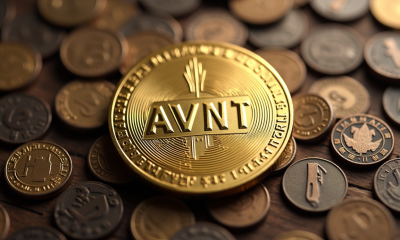
 Cryptocurrency1 week ago
Cryptocurrency1 week agoWhat next for Avantis price after the 73% recovery? – Crypto News
-

 Technology1 week ago
Technology1 week agoNothing OS 4.0 Beta introduces pre-installed apps to Phone (3a) series: Co-founder Akis Evangelidis explains the update – Crypto News
-
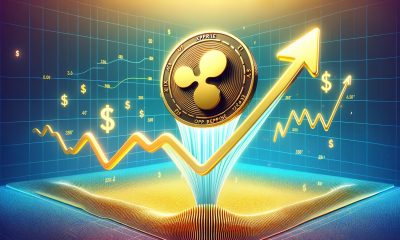
 Blockchain6 days ago
Blockchain6 days agoXRP Price Gains Traction — Buyers Pile In Ahead Of Key Technical Breakout – Crypto News
-

 Technology4 days ago
Technology4 days agoSam Altman says OpenAI is developing a ‘legitimate AI researcher’ by 2028 that can discover new science on its own – Crypto News
-

 Technology1 week ago
Technology1 week agoUniswap Foundation (UNI) awards Brevis $9M grant to accelerate V4 adoption – Crypto News
-

 Technology1 week ago
Technology1 week agoFrom Studio smoke to golden hour: How to create stunning AI portraits with Google Gemini – 16 viral prompts – Crypto News
-

 Blockchain1 week ago
Blockchain1 week agoBinance Stablecoin Outflow On A Steady Rise — What This Means For The Market – Crypto News
-

 De-fi1 week ago
De-fi1 week agoHYPE Jumps 10% as Robinhood Announces Spot Listing – Crypto News
-
others7 days ago
Platinum price recovers from setback – Commerzbank – Crypto News
-

 Cryptocurrency6 days ago
Cryptocurrency6 days agoWestern Union eyes stablecoin rails in pursuit of a ‘super app’ vision – Crypto News
-
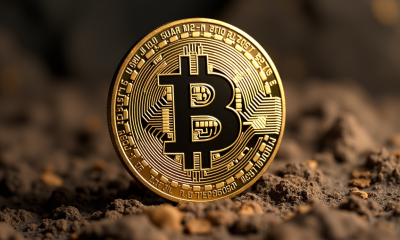
 Cryptocurrency1 week ago
Cryptocurrency1 week agoCrypto update: Bitcoin and Ethereum are stable as market’s focus shifts to US inflation data – Crypto News
-

 De-fi1 week ago
De-fi1 week agoSolana DEX Meteora Launches Native MET Token – Crypto News
-

 Technology1 week ago
Technology1 week agoGoogle and Apple face extra UK scrutiny over strategic role in mobile platforms – Crypto News
-
Business1 week ago
White House Crypto Czar Backs Michael Selig as ‘Excellent Choice’ To Lead CFTC – Crypto News
-
Business1 week ago
Breaking: Trump To Meet China’s President On October 30, Bitcoin Bounces – Crypto News
-
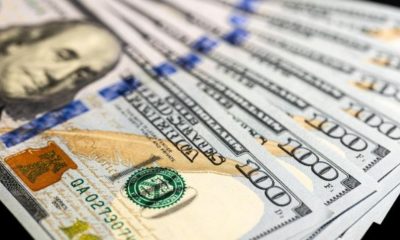
 Cryptocurrency7 days ago
Cryptocurrency7 days agoUSDJPY Forecast: The Dollar’s Winning Streak Why New Highs Could Be At Hand – Crypto News
-

 Cryptocurrency1 week ago
Cryptocurrency1 week agoLedger Nano Gen5 feels like Flex for less – Crypto News
-

 Cryptocurrency1 week ago
Cryptocurrency1 week agoFetch.ai and Ocean Protocol move toward resolving $120M FET dispute – Crypto News
-

 Technology1 week ago
Technology1 week agoOpenAI announces major Sora update: Editing, trending cameos, and Android launch on the way – Crypto News
-

 Metaverse1 week ago
Metaverse1 week agoGemini in Gmail automates meeting schedules effortlessly – Crypto News
-

 Technology1 week ago
Technology1 week agoMint Explainer | India’s draft AI rules and how they could affect creators, social media platforms – Crypto News
-

 Blockchain1 week ago
Blockchain1 week agoEntire Startup Lifecycle to Move Onchain – Crypto News
-

 Cryptocurrency1 week ago
Cryptocurrency1 week agoNEAR’s inflation reduction vote fails pass threshold, but it may still be implemented – Crypto News
-

 Blockchain7 days ago
Blockchain7 days agoXRP/BTC Retests 6-Year Breakout Trendline, Analyst Calls For Decoupling – Crypto News
-
others7 days ago
Indian Court Declares XRP as Property in WazirX Hack Case – Crypto News
-

 Technology7 days ago
Technology7 days agoSurvival instinct? New study says some leading AI models won’t let themselves be shut down – Crypto News
-
others6 days ago
Is Changpeng “CZ” Zhao Returning To Binance? Probably Not – Crypto News
-

 Technology1 week ago
Technology1 week agoSolana’s RWA market surpasses $700M all-time high as adoption accelerates – Crypto News
-

 Cryptocurrency1 week ago
Cryptocurrency1 week agoJito’s JTO token rises on a16z’s $50 million investment in Solana staking protocol – Crypto News
-
Technology1 week ago
Dogecoin Price Crash Looms as Flag, Death Cross, Falling DOGE ETF Inflows Coincide – Crypto News
-

 Blockchain1 week ago
Blockchain1 week agoBitcoin Whale From 2009 Moves Coins After 14 Years Asleep – Crypto News
-
Technology1 week ago
Can Hype Price Hit $50 After Robinhood Listing? – Crypto News
-
Business1 week ago
HBAR Price Targets 50% Jump as Hedera Unleashes Massive Staking Move – Crypto News
-
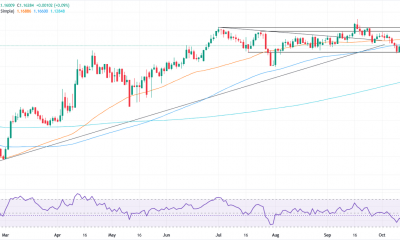
 others1 week ago
others1 week agoEUR/USD hovers at 1.1600 as muted CPI data fails to alter Fed stance – Crypto News
-

 Cryptocurrency1 week ago
Cryptocurrency1 week agoBitcoin’s institutional surge widens trillion-dollar gap with altcoins – Crypto News
-
Business1 week ago
PEPE Coin Price Prediction as Weekly Outflows Hit $17M – Is Rebound Ahead? – Crypto News
-

 Cryptocurrency1 week ago
Cryptocurrency1 week agoHYPE Breaks Out After Robinhood Listing and S-1 Filing: What’s Next? – Crypto News
-
Technology1 week ago
Analyst Eyes Key Support Retest Before a Rebound for Ethereum Price Amid $93M ETF Outflows and BlackRock Dump – Crypto News
-
Business1 week ago
Ripple Explores New XRP Use Cases as Brad Garlinghouse Reaffirms Token’s ‘Central’ Role – Crypto News
-
others1 week ago
Bitcoin Price Eyes $120K Ahead of FED’s 98.3% Likelihood to Cut Rates – Crypto News
-
others1 week ago
Tether’s Stablecoin 1.0 Era Is Over – Now the Industry Needs 2.0 – Crypto News












